For International Women’s Day, mathematician Lucy Rycroft-Smith has read a selection of maths books by women authors, and recommended some favourites.
There’s a strange irony about being a woman in mathematics. You spend a huge amount of time and energy answering questions about being a woman in mathematics instead of, you know, using that time and energy to do or write about actual maths. We women are somehow both the problem and the solution.
But behold: 2020 is here, and better and braver women than I have solved this conundrum. Here are a whole host of excellent books about maths by women that you should definitely read, collected for you by another woman in maths.
What can we do about supporting women in STEM? Well, here’s something concrete, right here and now. You can buy these books, read these books, give these books as presents, review these books and talk about these books on social media. You can even (and please do) print this article off and laminate it and present it with a flourish to anyone who tells you they’d love to read more women on mathematics but sadly there JUST AREN’T ANY.
1. For the graphic novel lover
The Thrilling Adventures of Lovelace and Babbage by Sydney Padua (Penguin, 2016)

The sheer energy that Padua has crammed into this book is astonishing. It’s the Stephen Fry of comic books: witty, smart and so damn full of knowledge you sense yourself in the presence of real greatness. I feel like if I saw someone reading this book I would know instantly that we’d get on. The fictional, ideal Ada Lovelace presented here is a true hero, the kind I’d want over for dinner. She eye rolls and quips her way through 315 pages, wearing outfits worthy of Anne Lister and smoking a pipe with rich aplomb. (I’m a little bit in love with her).
Bonus: the footnotes are some of the best I’ve ever seen: copious, meticulous, and hilarious.
2. For the artist
Beautiful Symmetry: A Coloring Book About Math by Alex Berke (MIT Press, 2020)
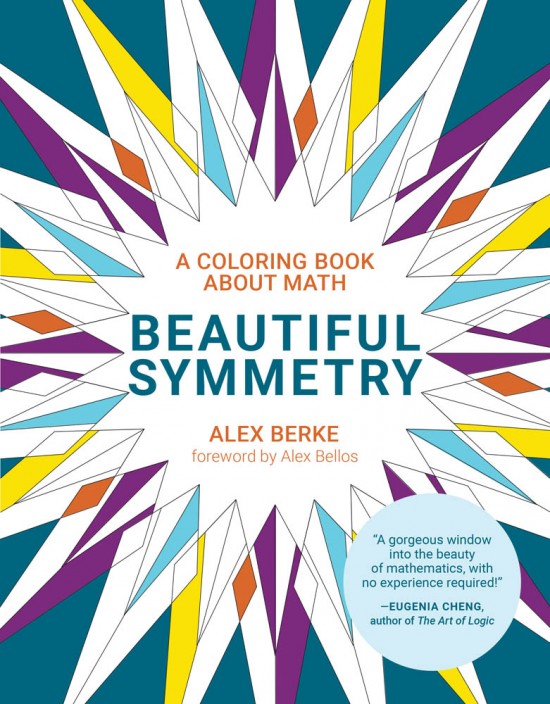
The Aperiodical says: We’ll be posting a full review of this book shortly!
Bonus: there’s actual mathematical theory in the back, clearly explained – just enough to whet your appetite. It’s a palette cleanser. A zesty sorbet of maths explanation after the glorious repast of colouring. Yum.
3. For the parent
A Compendium of Mathematical Methods by Jo Morgan (John Catt, 2019)
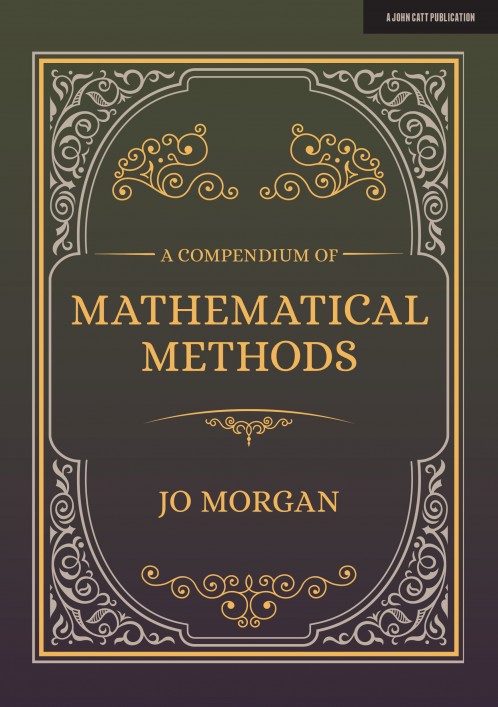
Starting with the very basics (addition and subtraction), Morgan presents a pic ‘n’ mix of different methods of working out and writing down sums. If you’ve ever looked at your child’s homework and wondered what the Napier’s Bones is going on with the way they’ve been taught to do multiplication, this is the perfect companion for you to do some collaborative kitchen table maths. It’s really clear, simple, and well explained, and some of the methods go all the way from primary school to A Level.
Bonus: some lovely little historical quirks and perks, like the useful knowledge that ‘factor’ comes from the same etymological root as ‘factory’ – both make products.
4. For the rebel
Power in Numbers: The Rebel Women of Mathematics, by Dr Talithia Williams (Quarto, 2018)
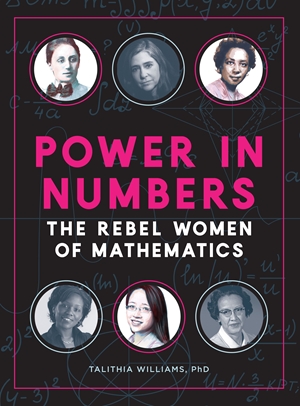
This book is the fulsome, thrilling answer to the question ‘what have women ever done for maths?’ and so much more. It’s a joy to read from start to finish, or dip in and out of at leisure; full of pictures and photographs, little bis and pieces of maths and historical colour that really bring these stories to life. Even in 2013, only around 6% – yes, that’s right, 6% – of mathematics professors in the UK were female. By my estimation, that’s about the same percentage as the academic staff at the Faculty of Mathematics at my university who are called John or Jack, for reference. That fact alone makes me want to press this excellent book into the hands of every little girl who has dreamed of being a mathematician – still, it seems an act of ‘rebellion’ in today’s world. Because often, what the women who appear in this book did to ‘rebel’ was to simply exist. To be female and a mathematician simultaneously is, it seems, that radical.
Bonus: So many Easter eggs here, but including a Hasse diagram from Dr Pamela Harris’ PhD thesis showing the zero weight Weyl alternation of the exceptional Lie algebra Gz is my favourite.
5. For the student who loves to ask ‘why?’
100% Proof! The Why of Maths by Jane Hope (Percival Press, 2016)

This book makes nonsense out of the old adage that every equation printed will cut readership by 10% (or a quarter, or even a half, depending on where you hear it). Combining clear, large-print algebraic proofs with colour diagrams, graphs and grids, Hope offers her namesake abstract noun to all those who may have struggled to understand mathematical argument in the past. It is simple and direct, with sparing but useful text and even the odd cartoon here and there. Mathematical proof plus humour? I’m in.
Bonus: the unexpected x= eggs pun on page 27 was un oeuf to really tickle me. (Bad yolk. Sorry).
6. For the gambler
Fat Chance: Probability from 0 to 1 by Dr Emily Riehl, Benedict Gross and Joe Harris (CUP, 2019)

This book sits somewhere between a popular science book and a textbook, and manages to be accessible and fun without dumbing down the content. ‘Why study probability?’ ask the authors of this book, before giving several reasons ending in the most compelling for them: ‘it’s just plain fascinating.’ I’m not a poker player, but I reckon reading this book would be a pretty good inoculation against the usual noobery for those who want to take up the hobby, but also want to skip the beginning part where they lose a ton of money before they really understand what they’re doing.
Bonus: you can learn about conditional probability through the zombie apocalypse. Dead good.
7. For the wannabe fly on the wall
Closing The Gap: The Quest To Understand Prime Numbers by Dr Vicky Neale (Oxford University Press, 2017)
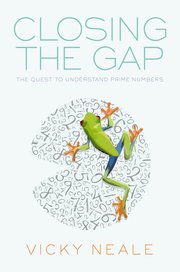
When I took part in the Big Internet Math Off last year, the one competitor that had me quaking in my boots was Oxbridge mathematician Dr Vicky Neale. She is not only fearsomely intelligent, but crucially in possession of that rare skill: the ability to simplify her subject to suit her audience. (To illustrate this, take a look at these teeny hedgehogs and scarves she made to make a point about prime numbers). If you have ever wondered what it feels like to be a real mathematician, this book is a superb window into the life of one without having to know too much background already; it’s a very manageable size, and for me feels something like the Heat magazine of mathematicians in that it is full of juicy gossip and celeb stories (without, I must add, either the trashy flavour nor the accusatory tone).
Bonus: a thought-provoking exploration of whether large-scale collaborative projects might be replacing the stereotypical lone mathematical genius as the way to make progress in the field of mathematics. As a mediocre mathematician at best, I’m quite invested in that one.
8. For the true crime enthusiast
Math on Trial: How numbers get used and abused in the courtroom, by Dr Leila Schneps and Coralie Colmez (Basic Books, 2013)
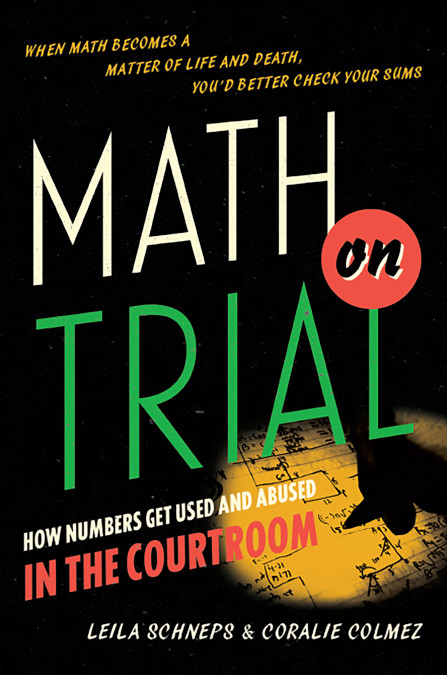
I’ve just finished The Secret Barrister and, while I enjoyed it, it has nothing on this book for leaving you open-mouthed at the horrific potential for justice to fail. Courtrooms are so often the sticky end of mathematics – where experts are asked to put their money (or indeed, other people’s freedom) where their mouths are, and move from mathematical theory into actual real-life decisions, some of them involving locking people away for the rest of their days. I found this as much a page-turner as any Lee Child novel, and much more elegantly written. Which is not really much of a compliment, is it?
Bonus: this is a mother and daughter combo writing team, which is my absolute dream.
9. For the polymath
Big data: does size matter? By Timandra Harkness (Bloomsbury, 2017)

If you like Malcolm Gladwell books, I reckon you’ll really enjoy this one. Harkness is a stand-up comedian, erudite speaker, and TV and radio presenter, and the writing in this is superb, flitting between subjects like politics, economics, geography, literature and history with ease. She is particularly good at explaining how stuff works – stuff that you feel like you should already know, but were afraid to ask.
Bonus: a well-argued take-down of the ‘quantifying self’ approach to measuring, nudging and improving our lives that appears to be taking over the world one app at a time.
10. For the baker
Cakes, Custard and Category Theory by Dr Eugenia Cheng (Profile Book, 2015)

Cheng is the absolute queen of the metaphor and this book is salt-and-peppered with food references as a way of clarifying all kinds of mathematical concepts. Don’t be put off by her impressive pedigree; despite being a renowned pure mathematician, she is deeply committed to ‘ridding the world of maths phobia’ and her gentleness and enthusiasm bounces off the page.
Bonus: actual recipes at the beginning of every chapter.
11. For the mathematical physicist
Storm in a Teacup: The Physics of Everyday Life by Dr Helen Czerski (Transworld/Penguin, 2016)

Despite working in the field, I still have no real idea how to conceptualise the relationship between maths and physics except by saying that they are..um.. close. Maybe not siblings, but the kind of cousin that was your favourite hanging-out partner at family gatherings and grew into your teenage crush. Who knows. This is a real belter, traversing the landscape of all three sciences as well as dipping in and out of mathematics, in what for me is the perfect popular science book. It also feels very mathematical because Czerski uses the connecting theme of pattern to weave her stories about the simple everyday into something magical and elevated.
Bonus: some wonderful ‘try this at home’ suggestions.
12. For the academic
Inventing the Mathematician: Gender, Race, and Our Cultural Understanding of Mathematics by Dr Sara Hottinger (State University of New York Press, 2016)
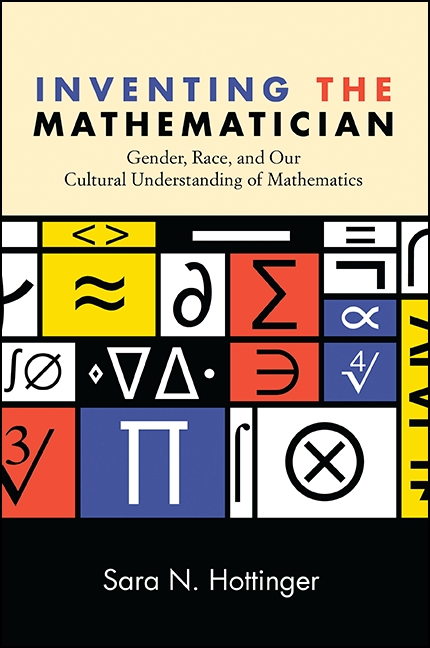
I’ve been thinking about this book pretty much non-stop since I read it last year. If you’ve ever thought that maths is black and white, right and wrong, pure and neutral, this book does an excellent job at examining this ‘absolutist’ view – and boy does it fall apart under scrutiny. Perhaps not for just any lay reader, but anyone with a background in research of some kind or a real interest in what mathematics is will find something to poke at here.
Bonus: Hottinger’s examination of the way women are portrayed in mathematical textbooks is forensic and damning.
13. For the coffee table
Mathematics + Art: A Cultural History by Dr Lynn Gamwell (Princeton University Press, 2015)

I got to interview Gamwell about this book last year and she was utterly extraordinary. This is an enormous and gorgeously illustrated tome of the kind that sends interior designer’s hearts all a flutter – it’s less a book and more a piece of actual furniture. You can get lost in it like the Labyrinth and you don’t care because it’s as sexy as David Bowie. As a fine artist and a mathematician, this hits all my sweet spots and then some. I’m giddy just thinking about it.
Bonus: a really lovely foreword by Neil deGrasse Tyson.
THANK YOU SO MUCH FOR THIS!! :)